New Roadmap Aims to Drive Second Chance Hiring in the U.S.
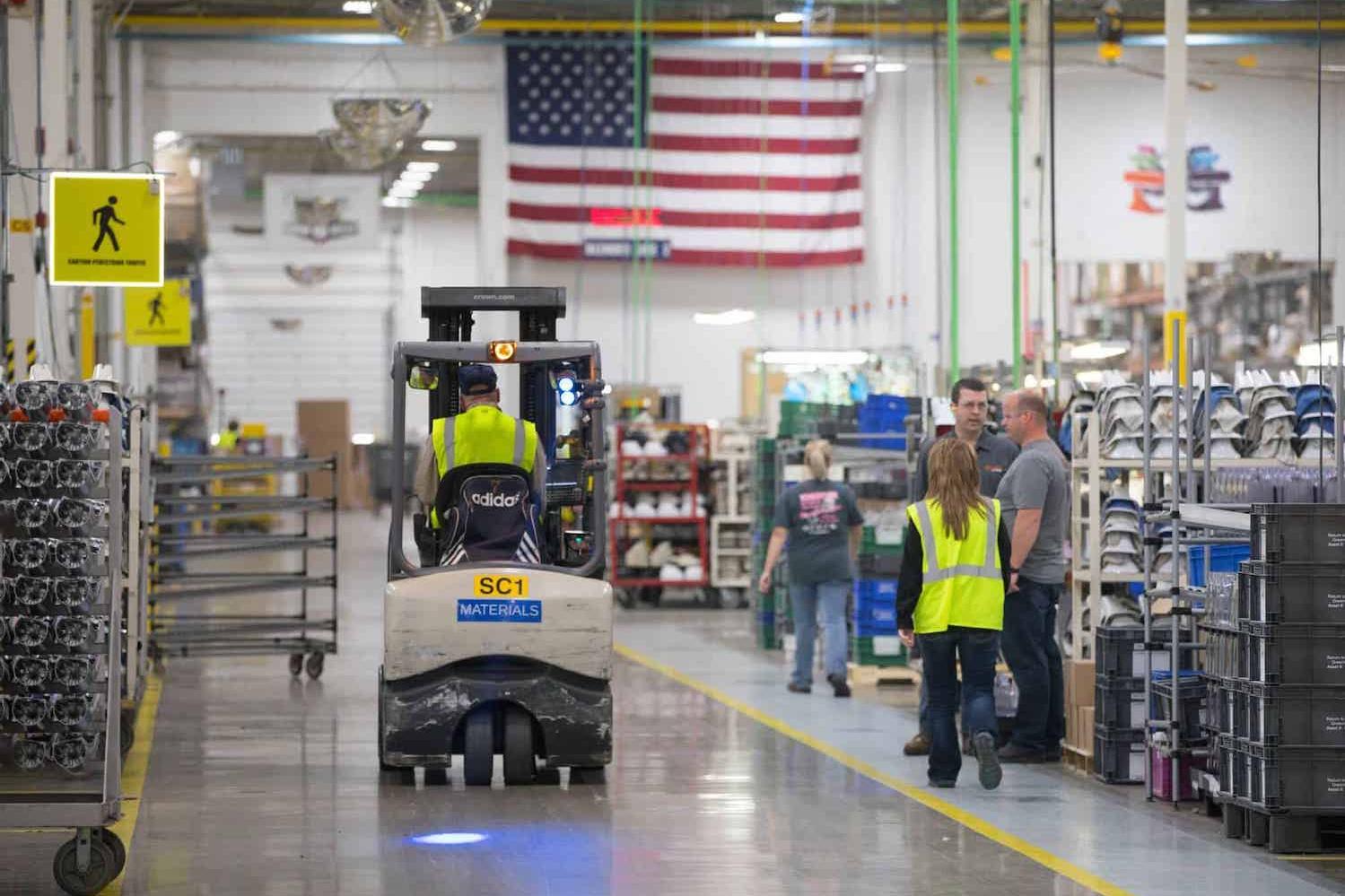
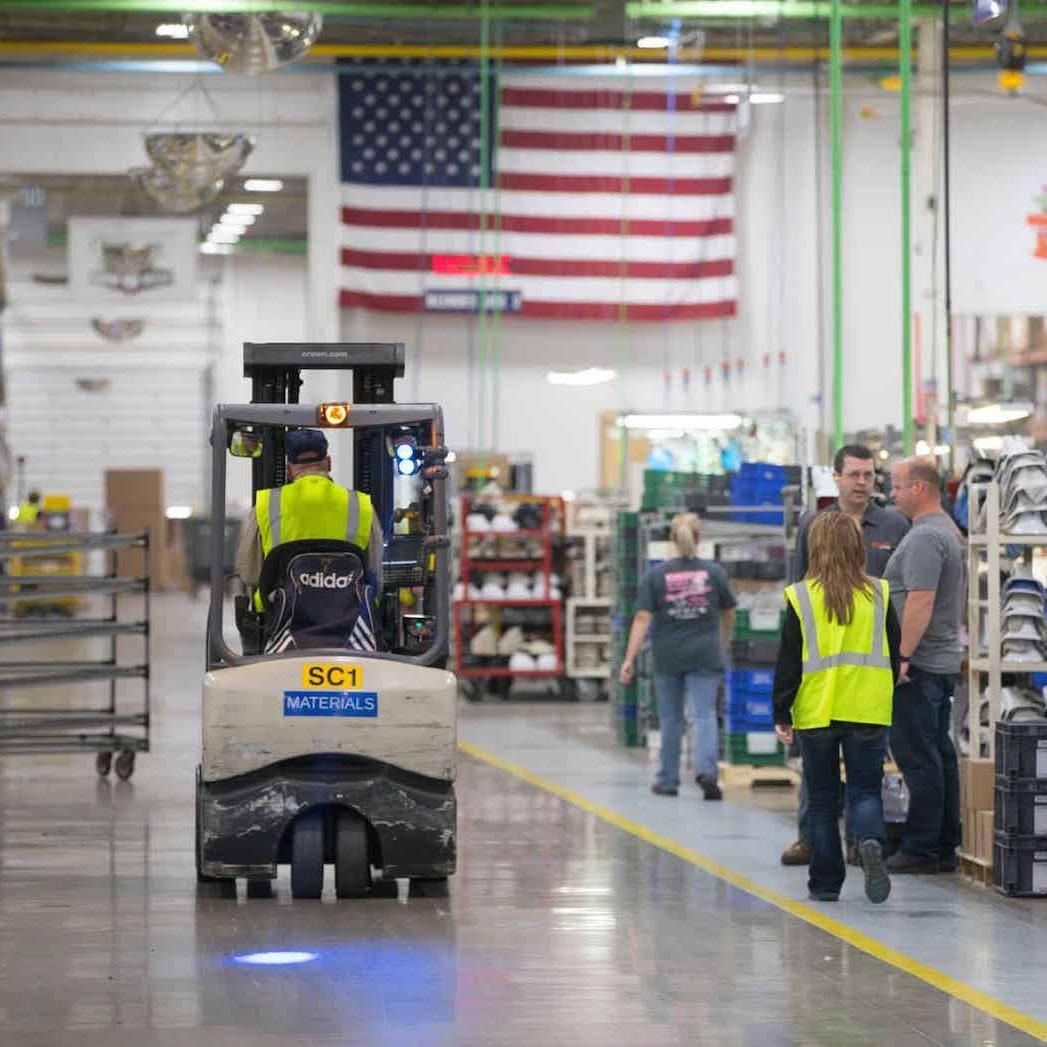
The Manufacturing Institute — the workforce development and education partner of the National Association of Manufacturers — is among the groups pursuing second chance hiring by looking to help manufacturers recruit people with criminal justice histories to fill some of the thousands of job openings within the industry.
(Image courtesy of the Manufacturing Institute)
Millions of people across the U.S. are locked out of stable employment due to past involvement with the criminal justice system. After decades of mass incarceration, around 1 in 3 U.S. adults now has a criminal record that would appear on a routine background screening. Particularly as industries across the country face labor shortages, employers are taking a renewed interest in second chance hiring as a way to stay staffed — and the trend offers life-changing potential for those who have served their time and are looking to re-enter the workforce.
Second chance hiring aims to challenge the stigma of criminal justice involvement and bring more people with records into the ranks of businesses large and small. More than filling a vacant position, employers see real benefits when they take a chance on these individuals. More 80 percent of business leaders and 85 percent of hiring mangers say employees with criminal justice histories perform just as well or better in their jobs compared to those without.
Still, many business leaders say they face barriers that make it more difficult for them to hire people with certain or any criminal justice involvement. The Responsible Business Initiative for Justice (RBIJ), an international nonprofit that works with companies to champion criminal justice reform, published research that explores these challenges further and sets out a roadmap for employers to further embrace second chance hiring.
The report is based on dozens of conversations with companies across industries, including financial services, insurance, manufacturing, service providers and restaurants, as well as academics and nonprofits.
“Businesses are open to implementing second chance hiring programs, yet many don’t," Ashley Furst, senior program manager for employment opportunities at RBIJ and lead author of the report, told TriplePundit. "I spoke to those who aren’t about what has deterred them from the process, and those who are actively hiring from this population about best practices to ensure both businesses and their new hires are successful.”
A roadmap for second chance hiring
Through the course of her interviews with employers, Furst identified three main reasons why businesses do not engage in second chance hiring. For starters, some employers say they are unable to identify justice-impacted candidates. Some also say prospective candidates may lack necessary skills, such as digital literacy. This makes logical sense: Those locked up are most likely to be poor and may have lacked access to digital tools before their incarceration, and those who served longer sentences re-emerge into a world that has changed quickly due to technology advancements. Further, some employers struggle with cumbersome internal processes or regulatory barriers.
In response, RBIJ's roadmap recommends three central "pillars" to drive second chance hiring across the workforce:
- Employer education on the business and human case for second chance hiring, as well as the unique challenges faced by people who are looking to restart their lives after being released from jail or prison
- Identifying community-based organizations and re-entry partners to help businesses develop successful second chance programs and support hires with criminal justice histories
- Workforce development and training opportunities for returning employees that open up pathways for employment and upward career mobility
“There have been numerous reports that have shown how beneficial it can be for a business to start second chance hiring, but what we found time and again was that employers were at a loss for where to start," said Furst, who is herself justice-impacted. "This roadmap can serve as a guide for businesses who are looking to hire justice-involved individuals, to ensure the most effective relationship for both the employer and the employee.”
How employer education powers second chance hiring
The first pillar, employer education, revolves around understanding the unique challenges returning citizens face, as well as building awareness within companies about what second chance hiring is, how to do it and why it matters.
Furst and the RBIJ recommend employers get started by reviewing and updating their hiring policies, identifying partners and markets that can help them build a second chance candidate pipeline, and clearly communicating the business case and company commitment to second chance hiring internally.
"Where most efforts to accelerate [second chance hiring (SCH)] programs get stuck is in between 'not doing it at all' to 'doing it really well,'" Furst wrote in the report. "A consequence of this perception is that SCH programs may stop soon after they start."
Most often, the employers that are most successful are those who start small, seek guidance from other employers and partners, and build their programs up over time, Furst found. See Page 7 of the roadmap for further guidance on employer education.
Identifying the right partners
When it comes to corporate action on social issues, building a network of partners that understand the needs of people and communities is crucial. As Emerald-Jane "EJ" Hunter, founder of the inclusion-focused integrated marketing firm myWHY Agency, told TriplePundit earlier this year: "If you had known better, you would’ve done better," and connecting with those who can help to build your understanding is and essential step to getting started.
Furst and the RBIJ recommend employers seek out community-based organizations and partners specifically focused on re-entry after incarceration in order to build their second chance hiring programs and meet the needs of employees with records.
"Second chance employees may have additional needs that should be addressed with accommodations, manager training, and/or cultural sensitivity training," Furst wrote in the report. "Individuals with criminal records, particularly those who have been recently released from prison and have limited work experience outside of the institution, will require a range of supportive services that most employers will not have the expertise or resources to provide."
Community-based partners can help to provide those services and ensure second chance hiring is successful, she found. See page 10 of the roadmap for guidance on identifying and engaging with the right partners in your community.
Meeting employee needs with workforce development
Some people with criminal justice histories have work experience, degrees and certifications, but many are limited in these areas. Rather than passing over them or relegating them to entry-level positions, employers can help them skill up — benefiting the company and the employee, as well as communities and the broader economy.
"With proper access to upskilling and workforce development opportunities, second chance talent could fill a tremendous number of open roles and address the labor shortage that businesses across the country continue to face," Furst found.
See Page 13 of the roadmap for guidance on how employers can find and attract second chance employees and help them succeed in their careers.
The bottom line: Second chance hiring is good for people, employers and the economy
Second chance hiring may be a change for some employers, but it's well worth the effort. As companies look to fill nearly 10 million job openings, this long-overlooked population is ready, willing and able to fill the gap — if they can get the support they need to succeed. Taking a chance on them benefits employers, helps to strengthen communities, and changes lives for people and families impacted by the criminal justice system, RBIJ found.
“I spoke with employers from across the country and across sectors, and it’s clear what businesses can do to be successful in becoming a second chance employer," Furst told us. "By understanding the unique needs of justice-involved workers, working with community-based organization partners to address those needs, and providing opportunities for advancement within your organization, employers can create meaningful second chances and strengthen the economy in the process.”
400 Drug Company CEOs Stand Up for Mifepristone

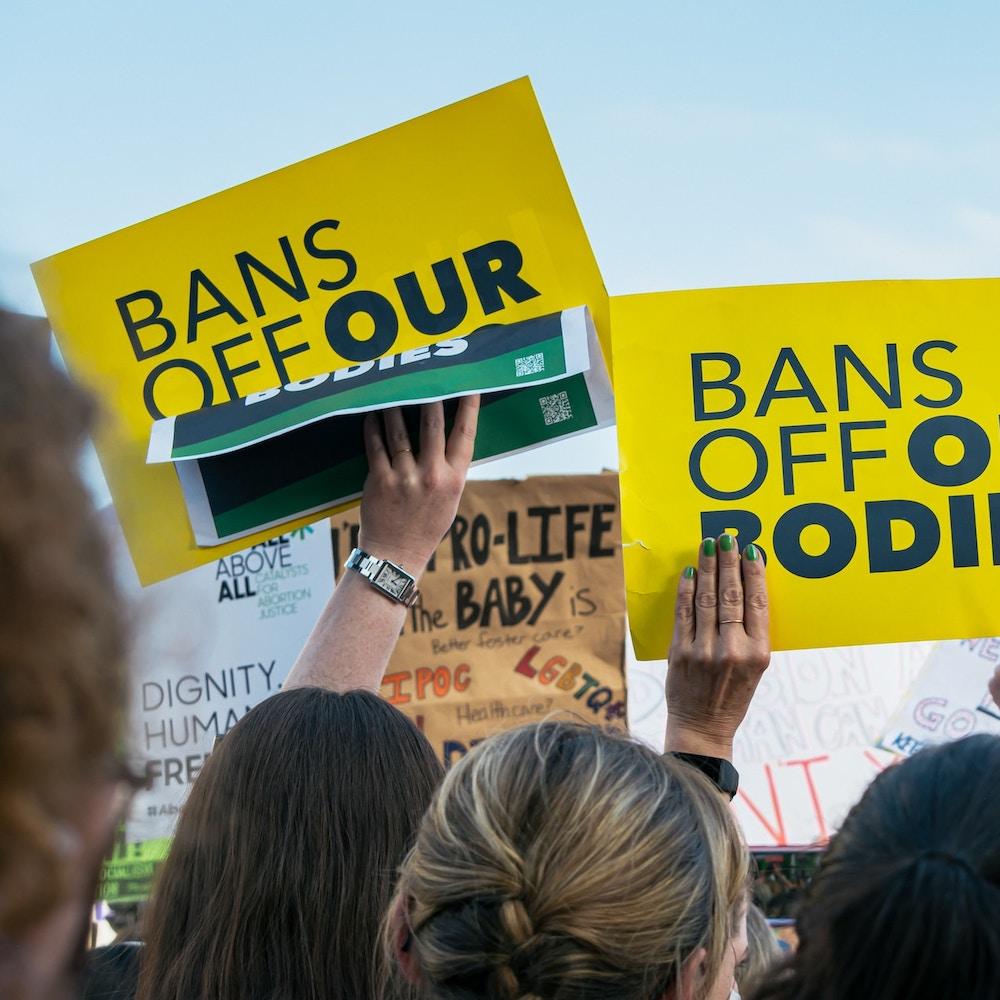
Demonstrators rally in front of the U.S. Supreme Court after the 2022 Dobbs v. Jackson ruling overturned federal protections for abortion access.
Businesses benefit from the orderly pursuit of legal precedent in a democratic society, because precedent helps to create a level playing field and a predictable regulatory environment. When that order is upended, chaos ensues. That is exactly what happened in April when a federal judge in Texas ruled that the drug mifepristone should be pulled from the market. Now it’s up to stakeholders in the pharmaceutical and biotech industries to unravel the mess — if they can.
400 CEOs finally wake up
The judge in question is U.S. District Court Judge Matthew Kacsmaryk of Amarillo, Texas, who has become widely known for his association with religious extremists. On April 7, Judge Kacsmaryk issued his ruling on a case that challenged the authority of the Food and Drug Administration to approve mifepristone for abortions. The FDA initially approved mifepristone 23 years ago and has reaffirmed its findings in recent regulatory updates.
Despite that history of science-based approval, Judge Kacsmaryk accepted the plaintiffs’ argument that the FDA was wrong. In doing so, he exposed the entire drug and biotech industries to the threat of having their products suddenly pulled off the market for any reason, regardless of the FDA’s science-based determinations.
The reaction from the pharmaceutical and biotech industries was forceful and united. More than 400 CEOs signed an open letter that warned against “judicial activism” and “judicial interference,” while underscoring the bottom-line risks of pulling FDA-approved products off the market without a basis in science or evidence.
The letter also emphasized that Kacsmaryk placed the whole future of modern U.S. medicine and biotechnology at risk because his decision disincentivizes researching, developing and bringing new products to market.
Mifepristone is not an isolated case
As framed by the mifepristone letter, it is difficult to imagine a more far-reaching and destructive anti-business decision rendered by a federal judge. Adding to the irony is the fact that Kacsmaryk is among the many federal judges appointed by former President Donald Trump. When Trump won his office in 2016, he carried a pro-business reputation with him, consistent with the pro-business mantle cultivated by Republican Party leadership over generations.
That pro-business reputation now seems to have evaporated. The Kacsmaryk ruling is just one manifestation of a broader attack on businesses large and small, including book bans against publishers and drag show bans that target entertainers and their host venues. The "woke capitalism” canard against corporate diversity, equity and inclusion programs is another manifestation, as are the state-based legal actions aimed at thwarting corporate and investor principles that follow science-based environmental, social and governance (ESG) guidelines.
The Kacsmaryk decision was itself enabled by the three Trump appointees to the U.S. Supreme Court. As half of a six-judge supermajority on the court, all three demonstrated an antipathy toward science when they voted to overturn 50 years of precedent on abortion rights in the 2022 Dobbs v. Jackson case. The ostensible aim of the Dobbs ruling was to empower states to set their own abortion standards. Apparently Kacsmaryk did not get the memo.
What CEOs can do
If drug and biotech CEOs are serious about tamping down the existential risks posed by individual judges with a religion-based agenda, they can start by taking accountability.
David Dayan, executive editor of American Prospect, rendered just such a verdict on the open letter. "The industry’s lament about judicial activism feels a bit like Dr. Frankenstein expressing outrage over the destruction carried out by his monster," he wrote in a long-form article published on April 12. "The pharmaceutical industry as a whole, and many of the individual officials who signed the letter, financially supported the Senate Republicans who confirmed Kacsmaryk to the federal bench.”
The industry gives generously on both sides of the aisle. However, this policy-blind approach to corporate political giving is clearly out of step with the radical anti-business, anti-science activism practiced by many in today’s Republican leadership.
In addition, as Dayan notes, there is no accounting for the partisan flow of dark money. If the activities of industry trade groups are any indication, though, the aura of policy-blind giving starts to crumble. Dayan cites the example of the leading trade group PhRMA, which has steered 81 percent of its donations to Republican officials over the past 15 years. Among the chief recipients of that largesse is Sen. Mitch McConnell, who is widely credited with engineering Trump’s three Supreme Court appointments.
Money is a good place to start, but not the only place
In advance of the all-important 2024 presidential election cycle, the U.S. pharmaceutical and biotech industries could help counterbalance anti-business radicalism by halting the flow of both public and dark monies to Republican candidates who look to restrict business activities and civil rights.
Beyond that, industry groups can help increase public support for reforming the U.S. Supreme Court. Opinion polls indicate that the public knows something is wrong, but they may not necessarily realize just how far below the ethical bar some of the Supreme Court justices have slid.
The lavish, undisclosed gifts endowed upon Associate Justice Clarence Thomas by a Republican mega-donor placed him in the media spotlight earlier this year. Since then, other instances of partisan influence-peddling have come to light, including magnanimous teaching assignments at the conservative George Mason University for Associate Justices Thomas, Neil Gorsuch and Brett Kavanaugh. The role of Chief Justice John Roberts’ wife as a top recruiter for law firms with cases before the court is another red flag.
The mifepristone case is heading to the Supreme Court on appeal. Pharmaceutical and biotech stakeholders will breathe a sigh of relief if it is overturned, but the fight to restore a pro-business, rational, science-based approach to public policy has only just begun.
Image credit: Gayatri Malhotra/Unsplash
More Certified Regenerative Foods Are Popping Up On Store Shelves


The USDA Organic seal and Non-GMO Project butterfly are the two most recognizable certifications on food products, but those logos may be getting competition soon. Regenerative agriculture verification programs are emerging, and food companies are starting to display logos of these programs on their packaging.
58 of the top 100 food companies are focusing on regenerative agriculture
Regenerative agriculture continues to grain ground in the United States and worldwide. Fifty-eight of the world’s 100 leading food companies have either made regenerative agriculture commitments or have publicly stated regenerative ag pilots or intentions, said Tina Owens, senior fellow at the Soil & Climate Alliance.
These companies see regenerative agriculture as essential to mitigating climate change and rebuilding the world’s soils. At the recent U.N. climate talks (COP27), regenerative agriculture was touted as one of the solutions to combat climate change.
But as the regenerative agriculture trend continues to grow, so does the need for a uniform definition and standards for what regenerative agriculture is. Unlike organic, regenerative agriculture has no legal definition or regulatory standard today. Such standards provide specific criteria for regenerative agriculture to producers and food brands and protect consumers from greenwashing by companies making unverified regenerative claims. “The lack of definition and misalignment around practices and what constitutes as ‘regenerative’ can create a risk of greenwashing,” the Food and Land Use Coalition found in a recent report.
Fortunately, third-party regenerative agriculture verification programs are emerging. Regenerative Organic Certification (ROC) has been adopted by tens of thousands of organic farms worldwide, and the ROC logo is now seen on products made by Patagonia, Nature’s Path and Alter Eco. The Ecological Outcome Verified standard of the Savory Institute’s Land to Market program has been adopted by more than 80 brands in the food and fashion industries.
Three new regenerative agriculture standards — Soil Carbon Initiative, Certified Regenerative by A Greener World and Regenified — are starting to verify farms and food brands. The three programs share similarities, including an emphasis on building soil health, continuous improvement, and testing for positive outcomes such as better water quality and enhanced biodiversity, among others. A recent webinar by the Climate Collaborative featured these verification programs.
Soil Carbon Initiative focuses on entire supply chain
The Soil Carbon Initiative (SCI) focuses on rapidly scaling acres under regenerative management, starting with soil management. The program aims to deliver third-party verified outcomes of soil health, soil carbon, increased biodiversity, improved water quality, climate resiliency, and greater farm and rural prosperity.
“We measure outcomes and don’t dictate practices,” says Adam Kotin, SCI’s managing director. Unlike ROC, SCI is open to all farmers — conventional to organic. “We want to welcome people where they are, but want to see a deepening commitment to soil health and regenerative practices,” Kotin says.
SCI focuses on six management pillars: minimizing soil disturbance, maintaining living roots in the ground, maximizing diversity both above and below ground, integrating livestock, reducing synthetic inputs, and farmer learning. “We see regenerative agriculture as the implementation of these principles as ways that drive results from an environmental, economic and agronomic perspective,” Kotin says.
A key part of SCI is testing for positive soil health outcomes using the Haney Soil Test. “This provides actionable insights to the farmer for building soil health and allows us to track progress over time,” Kotin says.
SCI is being developed in collaboration with SCS Global Services, an international leader in third-party certification. A unique aspect of the SCI standard is that it focuses not just on the farm, but also the entire supply chain up to food companies. “We’re focused on acre transition and taking the full supply chain as part of our purview,” Kotin says.
SCI launched a “go-to market” pilot in 2022 with 42 farmers involving more than 100,000 acres across different crops and production systems. Another SCI pilot will be launched this year with the goal of having 10 million acres committed for SCI verification within the next three years.
An SCI logo has also been developed that food companies can display on products that are verified — which is set to start appearing on products in the second quarter of this year, Kotin says. The Quinn snack food company is among the participants in the SCI program.
Certified Regenerative: Comprehensive verification of the farm
Certified Regenerative, launched by independent, nonprofit certifier A Greener World (AGW), is a comprehensive program that looks to quantify and qualify regenerative agriculture, says Emily Moose, AGW executive director. “It looks at a variety of sustainability metrics — not just air, water, soil health and livestock — but also how workers are treated and buildings and infrastructure," she says. "This is meant to be a full 360-degree, complete picture of the farm.”
Some of the key features of Certified Regenerative include animal welfare requirements such as a prohibition on Confined Animal Feeding Operations (CAFOs), an in-depth plan to improve biodiversity, social standards such as addressing living wages, and requirement for low- or no-till practices. A unique aspect of Certified Regenerative is that it prohibits the use of agrochemicals on crops that will be directly consumed, as well as genetically-modified crops.
Central to the program is the regenerative plan, which a farmer develops with a qualified expert of their choice. AGW’s review panel reviews and approves the plan.
AGW’s role is to help farmers be accountable to the plan and deliver the benefits of the program. “Producers have found this to be very helpful in terms of using it as a management tool and something that can be utilized on ongoing basis,” Moose says.
As with other regenerative agriculture certifications, soil health is the basis of AGW’s program. “Soil health is foundational to sustainability, and the foundation of any healthy, functioning, living system that we all depend on,” Moose says.
Biodiversity is “incredibly important” to Certified Regenerative, she continues. “It is measured on every farm in the program and ensuring that biodiversity is not only maintained but improved.”
Certified Regenerative also has a logo that food companies can display on their products. Zack’s Mighty Tortilla Chips, which are made with corn that is Certified Regenerative by AGW, now displays the logo on product packaging. A2 Milk recently announced that two of its products are now Certified Regenerative by AGW.
Regenified uses a tiered approach to verification
Regenified is a verification program founded in 2021 by Gabe Brown and Allen Williams, two pioneers in regenerative agriculture. “Both of those farmers have been in this regenerative space for two or three decades,” says Doug Peterson, chief science officer at Regenified. “Who better to start this process than them?”
Peterson says Regenified is a mark of good stewardship of the land and the earth. “We believe that if you nourish the soil, the plants, animals on it, everything flourishes including the communities, economics of rural communities, and economics of the individual farms,” he explains.
Regenified’s mission is simple. “It’s to help transition the world’s supply chain to regenerative agriculture by offering one of the most reliable standards and verification services,” Peterson says.
The Regenified “6-3-4 Verification Standard” aims to be very comprehensive, yet easy to understand, and is both practice- and outcome-based. Six stands for six pillars of regenerative agriculture: context or a farmer’s unique location, climate, and soil conditions, soil disturbance, “armoring” the soil, crop diversity, living roots in the ground, and livestock integration. Three stands for three rules of adaptive stewardship. Four ecosystem process outcomes are measured: water and mineral cycles, energy flow, and community dynamics.
Regenified is a tiered certification program based on continuous improvement. Tier one is zero to 20 percent of a farm operation enrolled in Regenified. Tier 2 is 20 percent to 40 percent of the farm, tier 3 is up to 60 percent, tier 4 is up to 80 percent, and tier 5 is up to 100 percent. In order to encourage continuous improvement, farmers cannot remain in any of the lower tiers for more than three years.
The Regenified team has verified hundreds of thousands of acres, with another 5 million acres in the pipeline, Peterson says. Products with the Regenified seal will start appearing on store shelves in the first and second quarters of this year. Star Hill Farm, the home of Maker’s Mark Distillery in Loretto, Kentucky, recently announced it had received Regenified Certification.
A version of this story was previously published in the Organic & Non-GMO Report.
Image credit: Ivan Samkov/Pexels
The Climate Science Behind Managing Disaster Risks


Tourists try to stay dry in a flooded St Mark’s Square in Venice, Italy, in 2018. Flooding in the region has only intensified in recent years.
It has become de rigueur for companies eager to reduce their climate-related disaster risks to sign up with groups that focus on assisting corporate clients with their climate change challenges.
The Science Based Targets initiative (SBTi), for one, helps the private sector set science-based emissions reduction targets. It’s a partnership between CDP, the United Nations Global Compact, the World Resources Institute and the World Wide Fund for Nature (WWF). Another, the Task Force on Climate-Related Financial Disclosures, offers guidelines for how companies can report their exposure to physical climate-related risks, among other things.
The assistance these groups provide is timely. The U.S. Securities and Exchange Commission (SEC), which protects investors and regulates publicly-held companies’ disclosures, is considering rules to require public companies to provide climate risk-related financial data. And most (if not all) U.N. agencies and other international climate change-related programs recognize the need to address disaster risks and other forms of climate risk worldwide.
But do these groups follow climate science? That question arose last month when a distinguished engineer openly questioned climate science in a presentation to the U.N. Disaster Risk Reduction Private Sector Alliance for Disaster Resilient Societies (ARISE) and its growing membership of U.S. corporate leaders. “We don’t know if climate change is happening now, and we don’t know if it will happen in the future,” he contended.
Peruse any legitimate climate source, and it’s nigh impossible to question climate science, whether our planet is warming and the effects of greenhouse gas emissions. The U.N. has a growing set of resources, among them:
- Race to Resilience, a global campaign that convenes non-government actors to build climate resilience in vulnerable communities.
- The A2R U.N. Climate Resilience Initiative, a global multi-stakeholder effort to strengthen climate resilience for vulnerable countries and people.
- U.N. Environment Program (UNEP) online course on Nature-based Solutions for Disaster and Climate Resilience, which has extended nature-based solutions certificates to more than 60,000 leaders worldwide.
- New Urban Agenda’s World Cities events, with “Adapting Cities for Climate Resilience” themes
- Annual agreements from the U.N. Conference of the Parties, of which the Paris Climate Agreement is the best known
As the U.N. plainly asserts: "It is unequivocal that human influence has warmed the atmosphere, ocean and land. Widespread and rapid changes in the atmosphere, ocean, cryosphere and biosphere have occurred."
ARISE, whose U.S. arm I co-chair, follows the Sendai Framework for Disaster Risk Reduction. The latest documents of the Framework — the 2015 U.N.-adopted document that calls for assessing and reporting progress on disaster-reduction plans — emphasize that disaster risks “are growing at an unprecedented rate globally, inflicting damage across sectors and vital systems for human societies and economies.”
It also maintains: “We are living outside the boundaries of what our planet can sustain, to the detriment of future generations. Radical shifts are needed to change course toward a more sustainable and risk-informed pathway, as the world is facing a projected 40 percent increase in disasters during the lifetime of the Sendai Framework to 2030.”
The Framework cites climate change on over half of its 140 pages, and the No. 1 commitment of the U.N. Plan of Action on Disaster Risk Reduction for Resilience is to take a risk-informed approach.
We must also heed another distinguished engineer, U.N. Secretary General António Guterres, who earned a degree in the field from the Instituto Superior Técnico in Portugal back in 1949. “Greenhouse gas emissions keep growing, global temperatures keep rising, and our planet is fast approaching tipping points that will make climate chaos irreversible,” he told CNBC last year. “We are on a highway to climate hell with our foot still on the accelerator.”
And we must promote companies looking to the SBTi and others for assistance in mitigating disaster risks. Onward with this important work!
Image credit: Jonathan Ford/Unsplash
This Cookbook Serves Up Seafood Recipes with a Side of Conservation
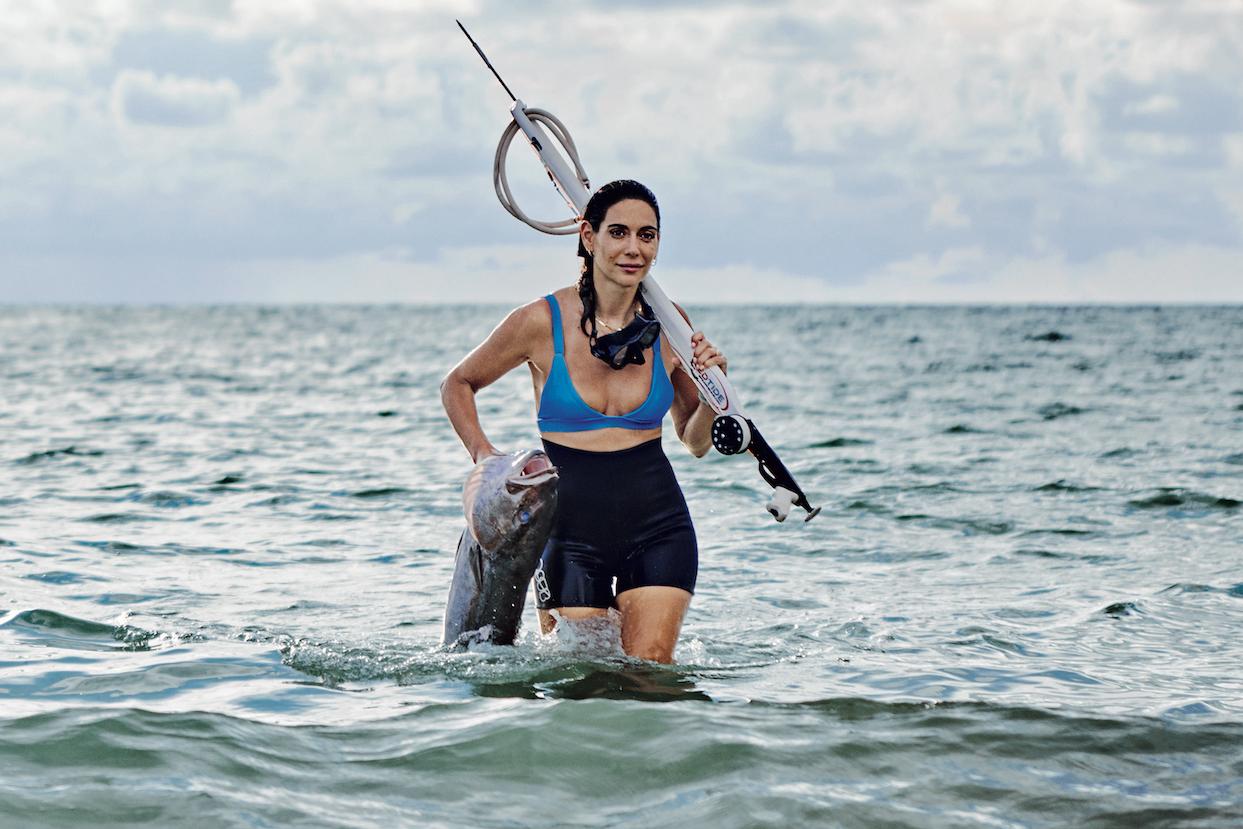
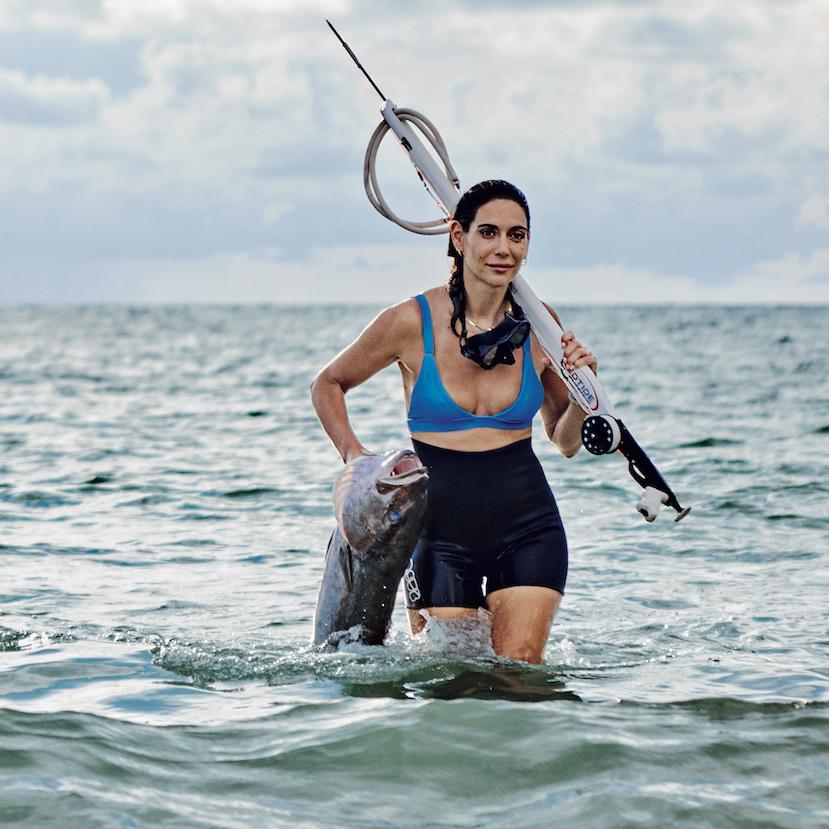
Valentine Thomas, professional spearfisherwoman, sustainable seafood advocate and author of the new cookbook, Good Catch: A Guide to Sustainable Fish and Seafood with Recipes from the World's Oceans. (Image credit: ©Andrew Thomas Lee)
Valentine Thomas sees the fishing industry firsthand on her dives around the world. The professional spearfisherwoman and sustainable seafood advocate’s latest cookbook, Good Catch: A Guide to Sustainable Fish and Seafood with Recipes from the World's Oceans, will publish on May 16. The book offers not only seafood recipes inspired by her travels, but also a thorough definition of sustainable fishing and insight on the impact of seafood sourcing beyond the water.
While technically a cookbook, Good Catch combines recipe, anecdote, reflection, and scientific analysis into a robust quilted perspective on eating from the water. The book’s refusal to bend to genre constraints delivers a whole-system awareness of fishing practices and an approachable guide to selecting seafood.

The preface details how Thomas thought little about her own seafood sources before her first dive. “I picked my fish based on just what looked the best and was the cheapest, basically,” Thomas remembered in an interview with TriplePundit.
Born in Quebec, Thomas studied criminal law and worked in finance before accepting an invitation to her first spearfishing dive from an acquaintance while traveling. Since then, she quit her corporate job and dedicated most of her time and professional life to hunting 170 feet below the water’s surface. Spearfishing often involves free-diving, the practice of holding one’s breath underwater — in Thomas’ case, up to six minutes at a time before surfacing — without the aid of oxygen tanks. Spearfishing with scuba equipment or other oxygen aids is banned in many waters, in large part to protect marine biodiversity.
The seafood sourcing conversation mirrors sustainable agriculture
Good Catch also notes the particularities of aquaculture while emphasizing that “the discussion we need to have about better sourcing practices and conservation… [is] no different, really, from how lots of us have been talking about fruits and vegetables.”
Conversations around overfishing parallel those around crop rotation and soil depletion. Overfishing, when the rate of fishing exceeds the rate of fish reproduction needed to maintain a healthy population, destabilizes species populations and risks affecting the entire food web within the biome. These effects, of course, foreshadow human and industrial consequences.
For example, Canada’s Grand Banks cod fishery collapsed due to overfishing in 1992, and more than 35,000 plant workers and fishers from over 400 coastal communities lost their jobs. Programs like the Marine Stewardship Council (MSC) developed largely in response to such catastrophes to oversee commercial fisheries and establish nationally and internationally accepted fisheries management and science.
Good Catch decodes which sustainability certifications to look for when buying seafood: “These include the MSC, the Aquaculture Stewardship Council (ASC), Best Aquaculture Practices (BAP), and Seafood Watch. Only wild-caught products that come from fisheries certified according to scientific sustainability criteria will display them.”
Sharing success stories with context to inspire action
In keeping with her book, Thomas also advocates for a shift in narrative around marine health, from a focus on what’s going wrong to success stories that often inspire actionable change more effectively. “When it comes to wild fisheries, everybody should learn from the U.S., Denmark, Australia and New Zealand, who are really the leaders when it comes to sustainable seafood. The problem is that the U.S. imports about 98 percent of its seafood, [but the country] is a leader when it comes to protecting its water — it’s super fishy.”
The book adds nuance to common sourcing and nutrition misconceptions, including that farmed fish is inherently unsustainable. The environmental impact of aquaculture and farmed seafood depends on many factors, including the farm’s waste discharge, species, impact on surrounding ecosystems and quality of life.
Considering different regions’ and countries’ fishing context — cultural significance, natural resources, trade and more — develops a more realistic, compassionate understanding of environmental impact. Thomas recalled diving in Zanzibar in her early 20s and feeling critical of a local’s fishing practices. A local said, “‘Look, girl, I don't have money to feed my family. I'm going to do everything I can to bring food to my kids and wife.’ He was telling me about the fishing fleets from other countries and said, ‘What am I supposed to do?’ That's when I understood.”
Expect entrees with global insights
Good Catch sorts 75 stunning recipes into 14 regional chapters, from Mexico to Sweden to New Caledonia. Each chapter is prefaced by and garnished with Thomas’ vibrant insights from dives in each locale. Florida’s recipes — like Swordfish Eggs Benedict with Dill Hollandaise or Baby Scallop Ceviche with Kohlrabi and Pineapple — come with accounts of catching invasive species like lionfish and how certain species that are less conducive to commercial fishing become grocery store rarities.
Taiwan’s chapter — amid dishes like Crab Dumplings in Dashi and Whitebait Chips with Yuzu-Tarragon Mayo — recall how Thomas and the Taiwanese Sustainable Fishing Association submitted alternative spearfishing regulations to the Ministry of Environment and Fisheries’ proposed ban. Their accepted proposal, which includes commercial fishing regulations, strategies to improve fish stocks and efforts to educate the public, preserved many local families’ main access to food and addressed the actual problem of commercial overfishing.
Good Catch may initially hook readers with its richly detailed dishes and guide to smart seafood selection. But Thomas’ steadfast, inquisitive love for life underwater imparts lessons beyond the ocean.
“Having a true conversation about food sourcing will offend a lot of people,” she said. “What can we do instead of calling each other pieces of shit because somebody's eating a steak, or patting each other on the back because we shared a campaign about saving the turtles? Realistic conversations are how we're going to evolve as a species.”
Prospector Popcorn Provides Meaningful Work for People with Disabilities
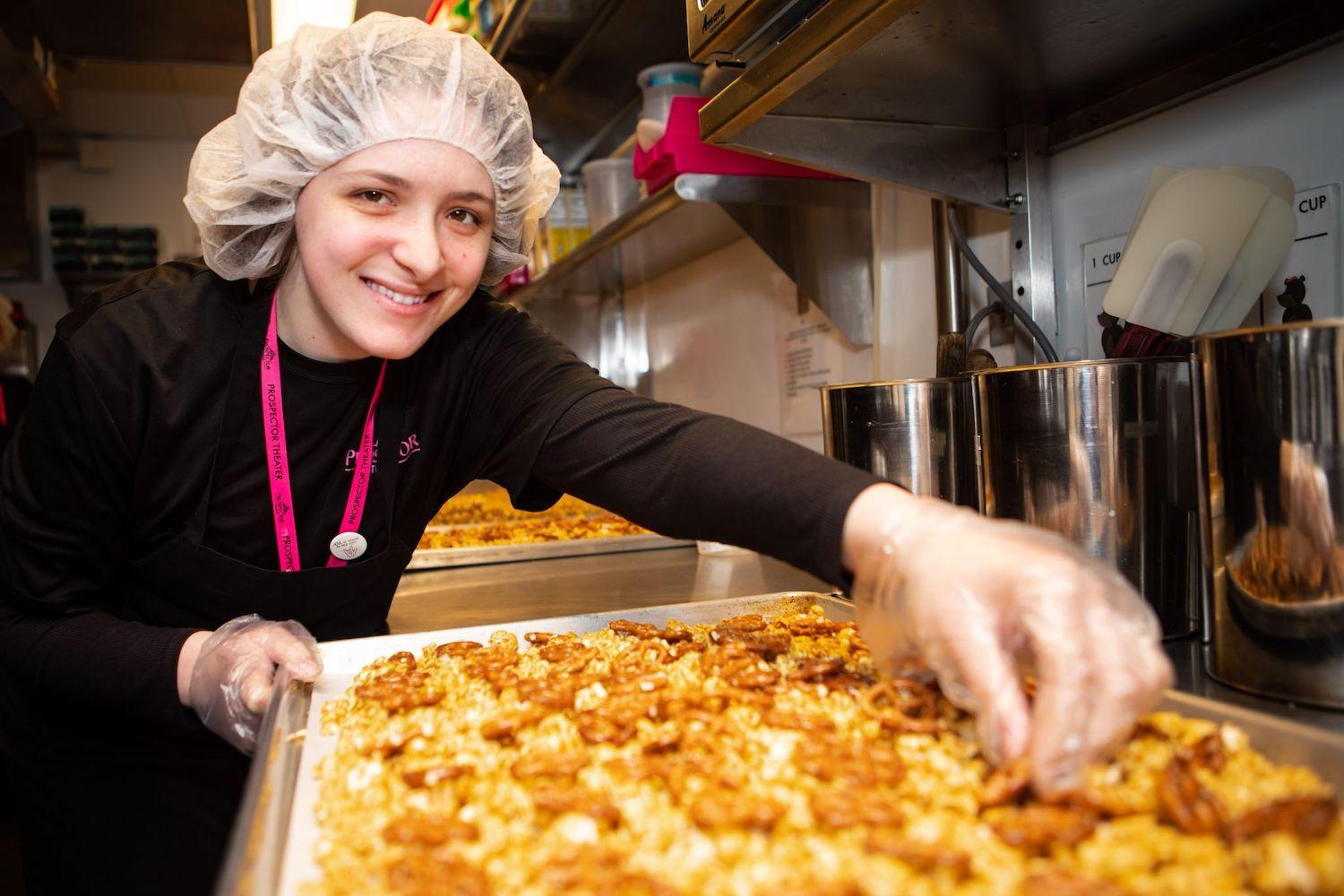
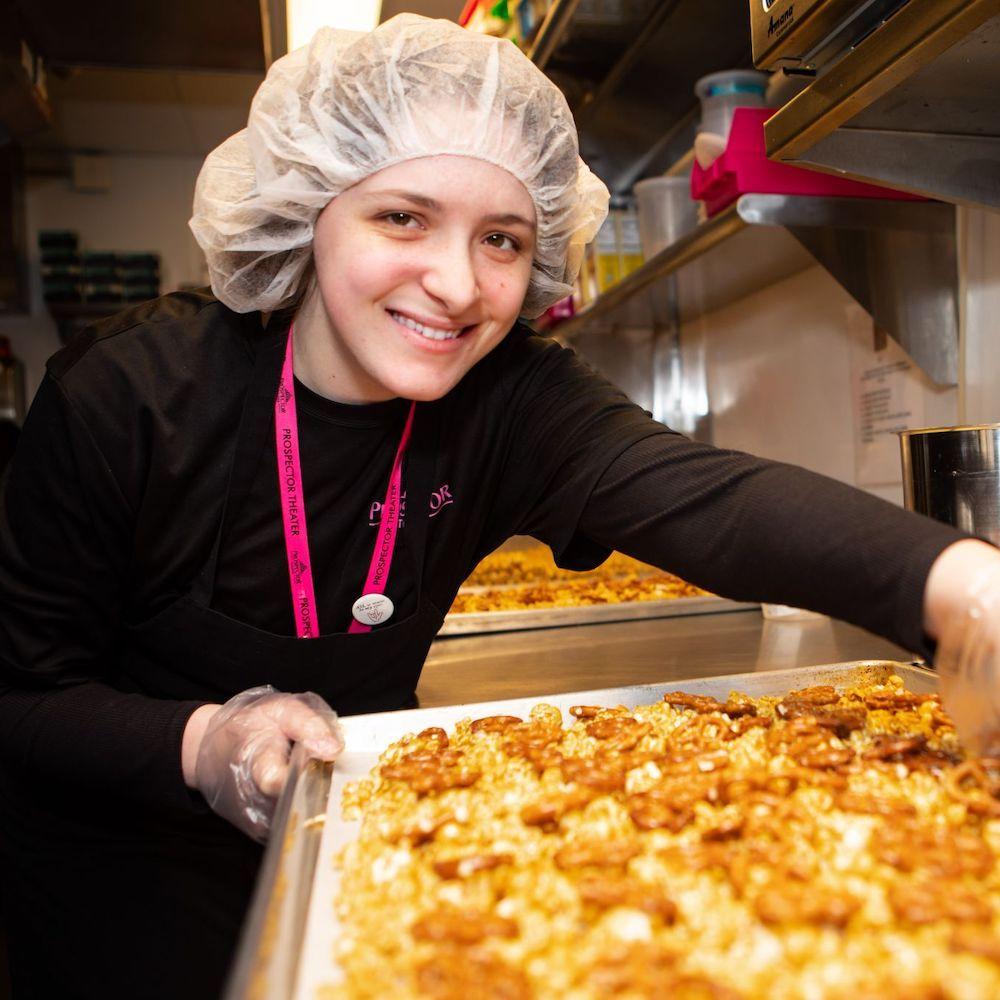
Gourmet popcorn maker Prospector Popcorn is setting the bar for disability inclusion. The nonprofit's mission is not just to employ people with disabilities, but also to give them the opportunity to shine.
The popcorn brand addresses the significant barriers to employment people with disabilities face by providing meaningful work that offers a better way of life through financial independence. TriplePundit spoke with Ryan Wenke, director of operations and technology at the nonprofit that started the brand, to learn more.
Opportunities come with competitive wages
"Roughly 80 percent of Americans with disabilities do not have a job," Wenke said. "Obviously, it's not because we don't want to work. It's that we're not given enough opportunities to work. Or the opportunities that are given are things like pushing shopping carts, bagging groceries, things that we don't find to be meaningful."
A lot of employers offer tedious jobs to people with disabilities and are allowed to pay them less than minimum wage through a certification from the Department of Labor. These waivers allow employers to pay based on the employee’s perceived ability to do the job less efficiently than workers without disabilities — instead of finding accommodations that could allow them to produce comparable work. For many, that means earning less than $4 an hour.
Prospector Popcorn takes a very different approach. "Our mission is providing competitive and inclusive employment for people with disabilities," Wenke said. "The average hourly rate that we have is about $18 an hour."
But it’s not just about the competitive wage. "No job is off limits here, and there's a variety of ways we do that. There are low-tech solutions and there are also high-tech solutions."
The pandemic pivot
The beginning of Prospector Popcorn can be traced to the Prospector Theater in Ridgefield, Connecticut. There weren’t any movie theaters within 10 miles of the city, Wenke said. In 2014, the nonprofit set out to address that need while providing jobs for the local community — specifically for people who self-identify as having a disability. When the COVID-19 pandemic hit, the theater ceased normal operations and a new opportunity arose.
"We've sold gourmet popcorn since we opened the concession stands," he said. "And when the pandemic hit, it kind of accelerated the idea of turning our core toward popcorn, so that what we sold in person could now go to homes across the country. We've always longed to share our mission with families and businesses that aren't able to come to Connecticut to see a movie."
Prospector Popcorn comes in sweet and savory flavors like strawberry ice cream, maple walnut ice cream, buffalo cheddar, sweet and spicy and a cheddar-caramel combo.
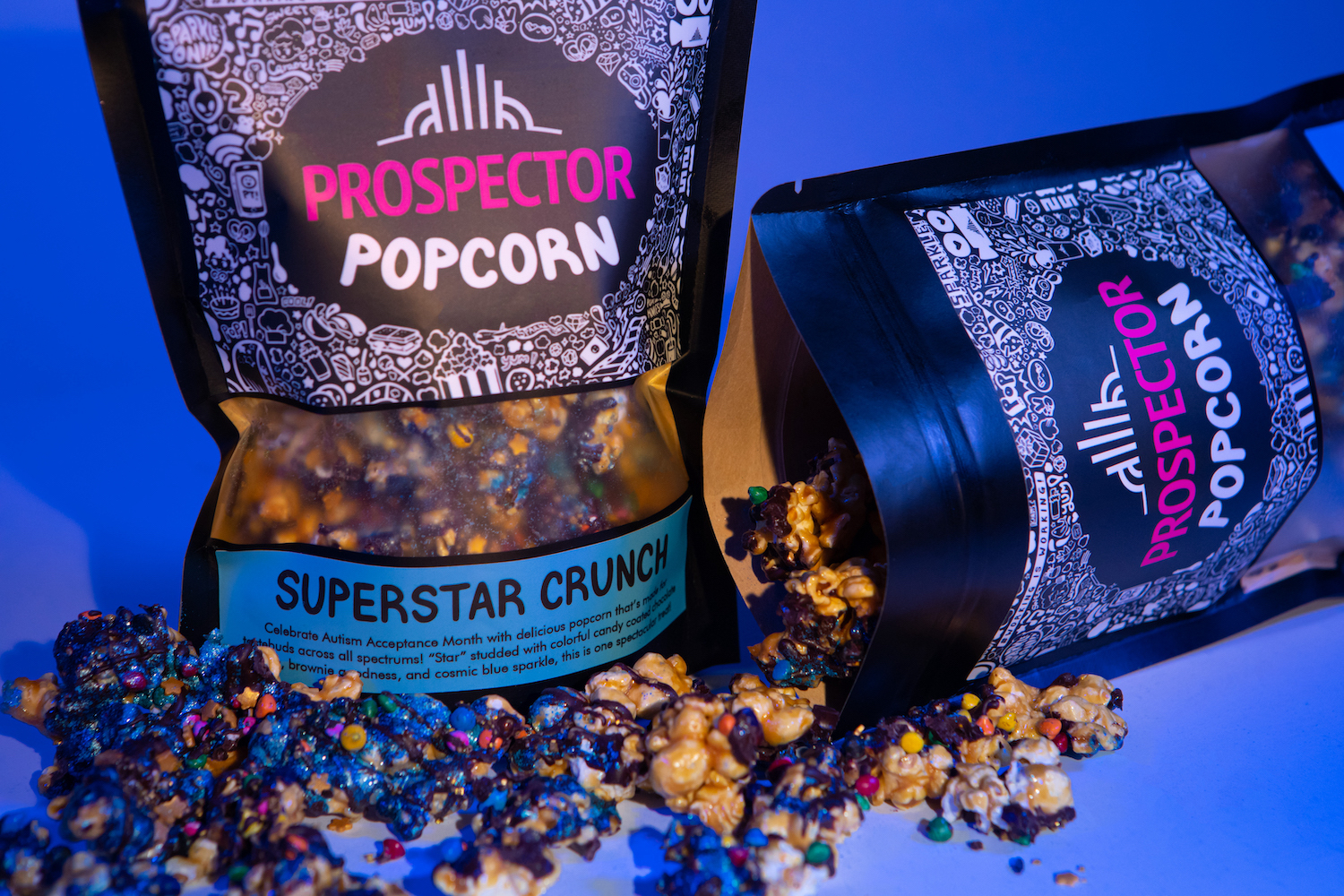
A variety of jobs for a variety of talents
"Just like the theater, there are so many jobs that go into one bag of popcorn," Wenke said. "You have to pop the popcorn. You have a marketing team to sell it. Our production team makes the graphics and the labels."
When Wenke says no job is off-limits, he means it. The nonprofit makes accommodations to remove accessibility barriers. The elevator installed in the theater is one example: If someone who uses a wheelchair wants to work in the projection room, they can use the elevator to do so.
"When it comes to popcorn specifically, we have everything color-coded to help with organization. We have images — large images — as we do have some Prospects that have difficulty reading," he said, explaining that the brand refers to employees as Prospects. "We have graphics in the kitchen that show measuring sizes represented by Mama Bear, Baby Bear, Goldilocks and Papa Bear. We have C-Pen readers that can scan a text and read it out loud."
Out of 125 Prospects, or employees, 75 percent identify as having a disability, Wenke said. That is much higher than the average business. And unlike many other businesses that employ people with disabilities, there isn’t a classification of jobs that are solely available to them. Those who self-identify as having a disability occupy all kinds of roles within the company — from the kitchen and box office all the way to the C-suite.
"There are many times when people come into the theater and say, 'Hey, I heard you have this mission, but everything's running smoothly,'" he said. "I think there's some notion that when you come here you're going to see people screaming, shouting, running. It's totally not that because, again, matching the appropriate job with the appropriate person is what's going to occur [here]. So there’s no distinction. I'm held to the same standards as somebody who just started yesterday. And that's how it has to be."
A role model for other businesses
Prospector’s model is inclusive and competitive, Wenke said. "We're all about teaching and training and not gatekeeping jobs." That model is making a difference in people’s lives — for those who stay at Prospector long-term and for those who gain valuable skills that allow them to move on to other things.
"We've had so many Prospects that, through earning a paycheck, move out of their parents’ home and get their first apartment," Wenke said. "Finally, get that first car. Go on a nice vacation for themselves. We've also had Prospects who have gone on to work at other jobs like working at Apple, or working at a real estate company in town, or working as a bartender after getting started in our cafe."
Prospector Popcorn isn’t gatekeeping its methods either. The nonprofit is eager to share its model with other businesses and is doing some consulting. "We don't want to be the only player in town," Wenke said.
Images courtesy of Prospector Popcorn